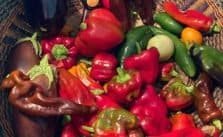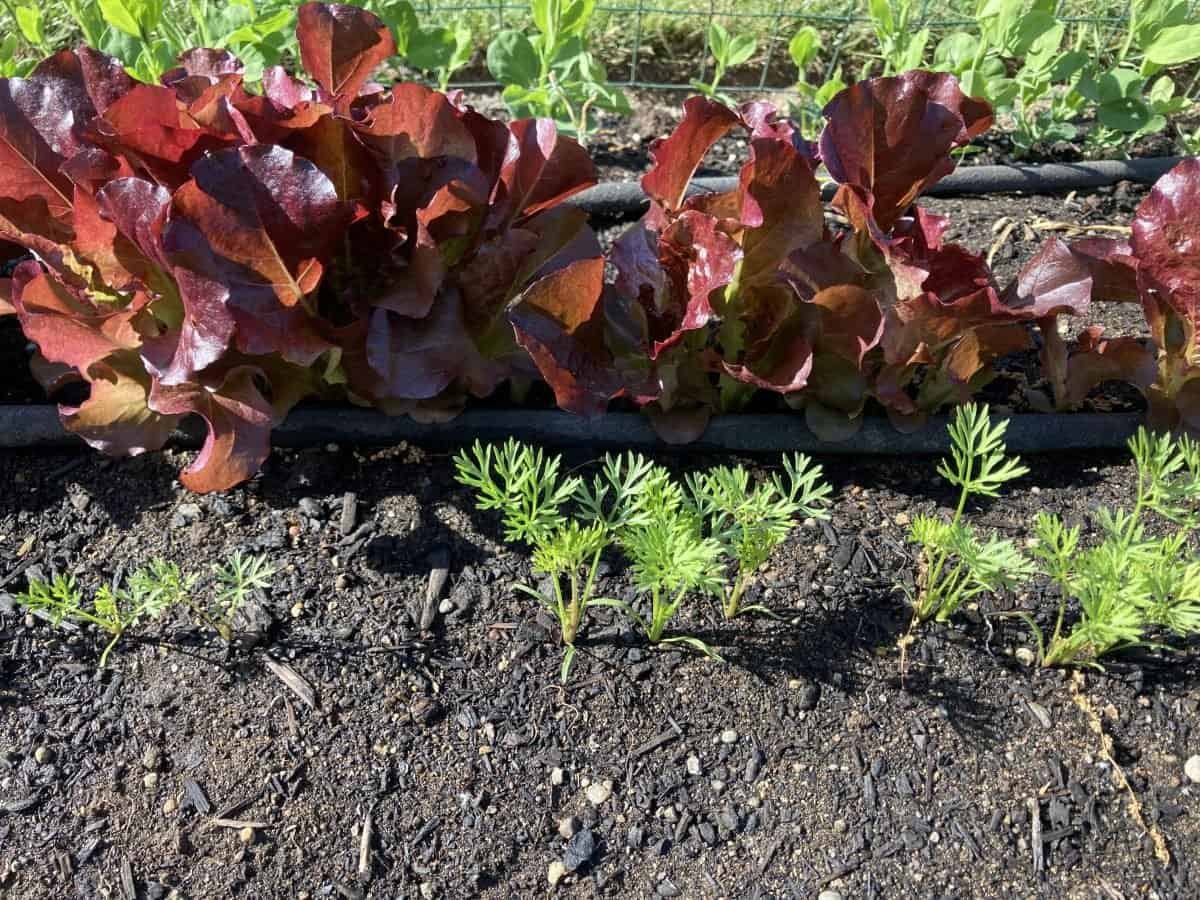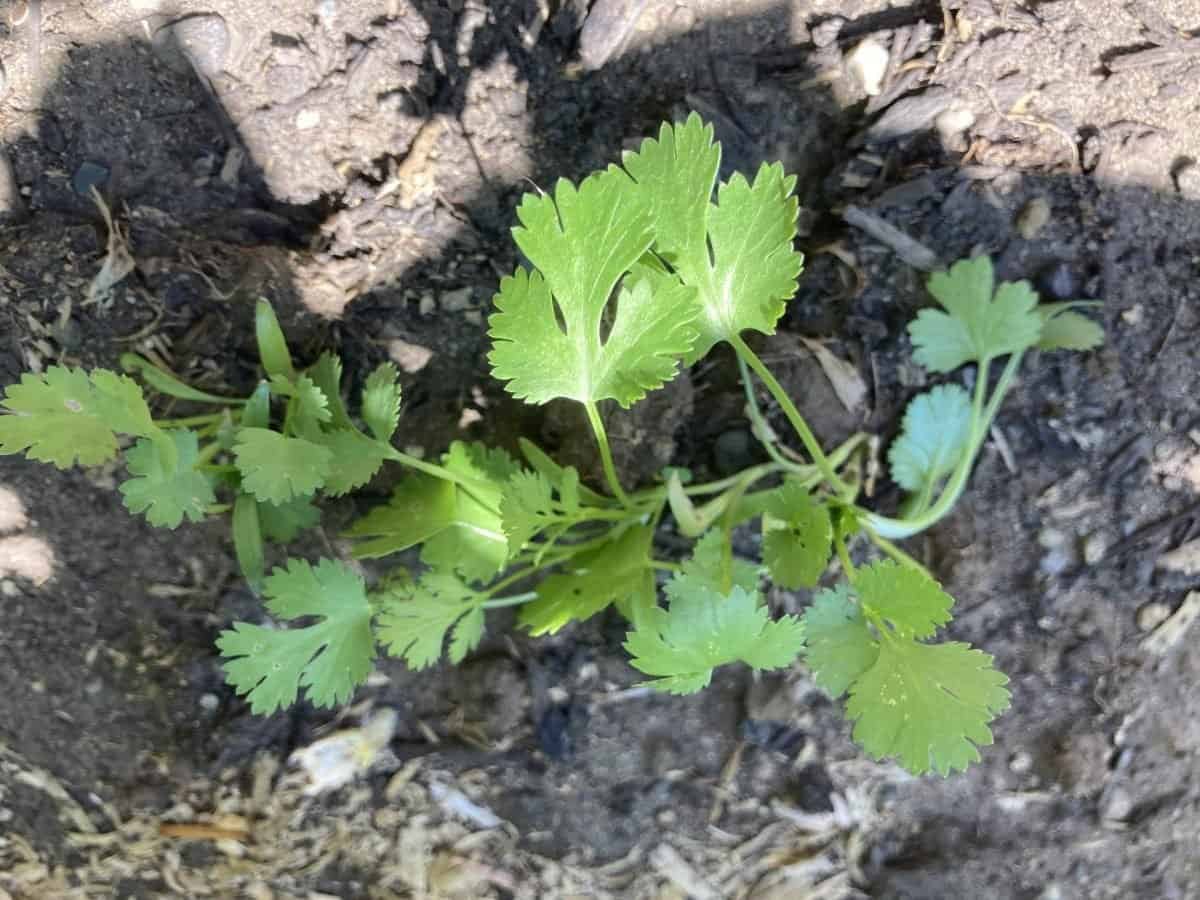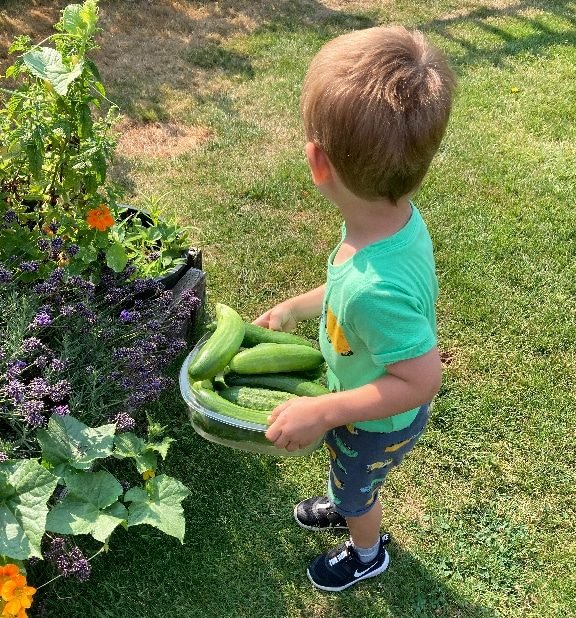10 Proven Tips for Growing the Best Vegetable Garden
Growing a vegetable garden can be a fun and rewarding experience for anyone who loves fresh produce. Whether you’re a seasoned gardener or a beginner, there are a few key things you can do to ensure that your garden is as healthy and productive as possible. By following some simple guidelines, you can grow the best vegetable garden possible.
The first step to growing a successful vegetable garden is to choose the right location. Vegetables need at least six hours of direct sunlight each day, so it’s important to choose a spot that gets plenty of sun. The soil should also be well-drained and rich in organic matter. If your soil is poor, you may need to amend it with compost or other organic materials.
Once you’ve chosen the right location, it’s time to prepare the soil. This involves removing any weeds or grass and loosening the soil to a depth of at least 12 inches. You can then add compost or other organic materials to improve the soil’s fertility. By taking the time to properly prepare your soil, you’ll give your vegetables the best possible start.
Planning Your Garden
Before starting a vegetable garden, it is important to plan out the details to ensure a successful harvest.

Choosing the Right Location

The location of the garden is crucial to its success. It is recommended to choose an area with at least six hours and preferably 8-10 hours of sunlight per day. The garden should also be in a location with good drainage, easy access to water, and close to your kitchen.
It is also important to consider the soil quality of the chosen location. The soil should be tested to determine its nutrient content and pH level. If the soil is not suitable for growing vegetables, it may be necessary to amend it with compost or other organic matter. See more details on soil composition below.
Deciding on the Size of Your Garden
The size of the garden will depend on the amount of available space and the number of vegetables the gardener wishes to grow. It is important to start small and gradually expand the garden as experience and resources allow.
A good rule of thumb is to start with a garden that is no larger than 10 feet by 10 feet. This size will provide enough space to grow a variety of vegetables without overwhelming the gardener.
In addition to the size of the garden, it is important to consider the layout. The garden should be designed with easy access to each plant for watering, weeding, and harvesting.
It is also important to decide if you are going to build raised beds or have rows directly planted in the ground. The ideal size is 4 X 8 with a path on either side to allow access to the middle of the garden bed.
Preparing Your Soil
Before planting your vegetable garden, it’s important to prepare the soil properly. This will help ensure that your plants get the nutrients they need to grow strong and healthy. Here are two important sub-sections to consider:
Testing Your Soil
Testing your soil is the first step in preparing your garden. It will help you determine the pH level and nutrient content of your soil. You can purchase a soil testing kit at your local gardening store or send a sample to a lab for analysis. Once you know the pH level of your soil, you can adjust it accordingly. Most vegetables prefer a pH level between 6.0 and 7.0.
Amending Your Soil
After testing your soil, you may need to amend it to improve its quality. Adding organic matter, such as compost or manure, can help improve soil structure and increase its water-holding capacity. You can also add fertilizer to provide your plants with the nutrients they need to grow. Be sure to follow the instructions on the package carefully and don’t over-fertilize, as this can damage your plants.
It’s important to till or turn your soil to a depth of at least 8 inches before planting. This will help ensure that air, water, and nutrients can reach the roots of your plants. Remove any rocks, weeds, or debris from the soil as you go. Finally, rake the soil smooth and level before planting.
Selecting Your Vegetables
Choosing the right vegetables for your garden is essential to ensure a bountiful harvest. This section will cover two key factors to consider when selecting your vegetables: the climate in your area and the types of vegetables you want to grow.
Choosing Vegetables That Grow Well in Your Area
It’s important to choose vegetables that are well-suited to the climate in your area. Some vegetables thrive in cool weather, while others require hot temperatures to grow. Research the average temperature and rainfall in your region to determine which vegetables will grow best.
Another important factor to consider is the length of your growing season. If you have a short growing season, choose vegetables that mature quickly, such as radishes, lettuce, and spinach. If you have a longer growing season, you can consider growing vegetables that take longer to mature, such as tomatoes, peppers, and eggplants.
Deciding on the Types of Vegetables You Want to Grow
When deciding on the types of vegetables to grow, consider your personal preferences and the needs of your family. If you’re growing vegetables for a family with picky eaters, consider growing vegetables that are easy to disguise in meals, such as zucchini, carrots, and sweet potatoes.
You may also want to consider growing vegetables that are expensive to buy at the grocery store, such as heirloom tomatoes or specialty peppers. Additionally, consider growing vegetables that are easy to preserve, such as cucumbers for pickling or tomatoes for canning.
Starting Your Seeds
Starting your own seeds is a great way to get the exact varieties you want and to get a head start on the growing season. Here are some tips to get you started:
Choosing the Right Seeds
When choosing seeds, it is important to consider your climate and growing conditions. Look for seeds that are adapted to your region and that will thrive in your garden. Consider factors such as temperature, humidity, and soil conditions when selecting seeds.
Additionally, consider the type of vegetable you want to grow. Some vegetables, such as tomatoes and peppers, require a longer growing season and may need to be started indoors. Other vegetables, such as lettuce and radishes, can be directly sown in the garden.
Starting Your Seeds Indoors
If you plan to start your seeds indoors, you will need to create a suitable environment for germination. This can be done using a seed-starting tray or by using individual pots. Fill the containers with a high-quality seed-starting mix and water thoroughly.
Place the containers in a warm, sunny location or use a grow light to provide adequate light. Keep the soil moist but not waterlogged, and be patient. Seeds can take anywhere from a few days to a few weeks to germinate.
Once your seeds have germinated, you will need to gradually acclimate them to the outdoors. This process, known as hardening off, involves gradually exposing the seedlings to outdoor conditions over a period of several days. This will help prevent shock and ensure that your seedlings are strong and healthy when you transplant them into the garden.
Transplanting Your Seedlings
Transplanting your seedlings is a crucial step in growing a successful vegetable garden. This section will cover two sub-sections: hardening off your seedlings and transplanting your seedlings into the garden.
Hardening Off Your Seedlings
Before transplanting your seedlings into the garden, it’s important to harden them off. Hardening off is the process of gradually acclimating your seedlings to the outdoor environment. This helps prevent transplant shock and ensures that your seedlings will thrive in their new home.
To harden off your seedlings, start by placing them outside in a sheltered location for a few hours each day, gradually increasing the amount of time they spend outside over the course of a week. Be sure to protect them from wind, direct sunlight, and extreme temperatures during this process.
Once your seedlings are fully acclimated to the outdoor environment, they will be ready for transplanting.
Transplanting Your Seedlings into the Garden
When transplanting your seedlings into the garden, it’s important to choose the right time of day and weather conditions. Transplant on a cloudy day or in the late afternoon to avoid exposing your seedlings to direct sunlight and heat.
Before transplanting, prepare the soil by adding compost or other organic matter to improve soil quality. Dig a hole for each seedling that is slightly larger than the root ball. Gently remove the seedling from its container, being careful not to damage the roots. Place the seedling in the hole and backfill it with soil, patting it down gently to remove air pockets.
Water your seedlings immediately after transplanting and continue to water them regularly to ensure they stay hydrated. Mulching around your seedlings can also help retain moisture in the soil.
Watering Your Garden
Watering your garden is a crucial step in growing healthy and productive plants. Here are some tips to help you water your garden effectively.
Determining How Much Water Your Garden Needs
The amount of water your garden needs depends on several factors, such as the type of plants you are growing, the soil type, and the weather conditions. Here are some methods to help you determine how much water your garden needs:
- Use a rain gauge to measure rainfall in your garden.
- Check the soil moisture level by inserting your finger into the soil. If the soil is dry, it’s time to water.
- Observe your plants for signs of water stress, such as wilting or yellowing leaves.
Choosing the Right Watering Method
There are several watering methods to choose from, each with its own advantages and disadvantages. Here are some popular watering methods:
| Watering Method | Advantages | Disadvantages |
|---|---|---|
| Sprinklers | Easy to use, covers a large area | Can waste water, may not reach all plants evenly, and causes diseases |
| Drip irrigation | Efficient, delivers water directly to plant’s roots | Requires installation, can be expensive |
| Hand watering | Allows for precision watering, can be therapeutic | Time-consuming, may not cover a large area |
By determining how much water your garden needs and choosing the right watering method, you can help your plants thrive and produce a bountiful harvest.
I would not recommend watering overhead getting the entire plant wet, this can cause diseases to the plants and damage the vegetables you are growing.
Fertilizing Your Garden
One of the most important things you can do to ensure a bountiful harvest from your vegetable garden is to fertilize it properly. Here are some tips for choosing and applying the right fertilizer:
Choosing the Right Fertilizer
Before choosing a fertilizer, it’s important to know what nutrients your soil needs. You can get a soil test kit from your local garden center or cooperative extension office to determine the pH level and nutrient content of your soil. Once you know what your soil needs, you can choose a fertilizer that will provide the necessary nutrients.
There are many different types of fertilizers on the market, including organic and synthetic options. Organic fertilizers are made from natural materials like compost, bone meal, and blood meal, while synthetic fertilizers are made from chemicals. Both types can be effective, but many gardeners prefer organic fertilizers because they are less likely to harm beneficial soil organisms and they are healthier.
When choosing a fertilizer, look for one that has a balanced ratio of nitrogen, phosphorus, and potassium (NPK). For most vegetables, a ratio of 10-10-10 or 12-12-12 is ideal.
See my Complete Organic Fertilizer recipe that you can mix yourself.
Applying Fertilizer to Your Garden
Once you’ve chosen a fertilizer, it’s important to apply it correctly. Here are some tips:
- Apply fertilizer when the soil is moist, but not waterlogged.
- Spread the fertilizer evenly over the soil surface.
- Be careful not to get fertilizer on the leaves or stems of your plants, as this can cause burning.
- Water the fertilizer into the soil immediately after applying it.
- Repeat the application according to the instructions on the fertilizer package.
It’s also important to note that over-fertilizing can be harmful to your plants and the environment. Follow the instructions on the fertilizer package carefully, and don’t apply more than recommended.
Controlling Pests and Diseases
One of the biggest challenges to growing a successful vegetable garden is controlling pests and diseases. Here are some tips to help keep your garden healthy and thriving:
Identifying Common Garden Pests and Diseases
Before you can control pests and diseases, you need to know what you’re dealing with. Some of the most common pests and diseases that affect vegetable gardens include:
- Aphids
- Cabbage worms
- Cutworms
- Tomato blight
- Powdery mildew
It’s important to be able to identify these and other pests and diseases so you can take appropriate action to control them.
Choosing the Right Control Methods
There are many different ways to control pests and diseases in your vegetable garden, but not all methods are created equal. Here are some things to consider when choosing a control method:
- Effectiveness: Will the method actually work to control the pest or disease?
- Safety: Is the method safe for you, your family, and the environment?
- Cost: Is the method affordable?
- Convenience: Is the method easy to use and implement?
- Companion Planting to protect the plants from pests.
Some effective and safe methods for controlling pests and diseases in your vegetable garden include:
| Method | Description |
|---|---|
| Handpicking | Removing pests by hand |
| Neem oil | A natural insecticide |
| Copper fungicide | A natural fungicide |
| Row covers | Protecting plants from pests |
Remember to always follow the instructions on any pest or disease control product you use, and to use them sparingly and only when necessary to avoid harming beneficial insects and pollinators.
Harvesting Your Vegetables
After all the hard work of planting and nurturing your vegetable garden, it’s time to reap the rewards of your efforts. Harvesting your vegetables at the right time is crucial to ensure that they are at their peak flavor and nutritional value. This section will cover the two main aspects of harvesting your vegetables.
Determining When Your Vegetables Are Ready to Harvest
Knowing when to harvest your vegetables can be tricky, as different vegetables have different signs of ripeness. Here are some general guidelines to follow:
| Vegetable | Signs of Ripeness |
|---|---|
| Tomatoes | Firm, fully colored, and slightly soft to the touch |
| Peppers | Firm, glossy, and fully colored |
| Carrots | Deep orange color and a diameter of at least 1 inch |
| Lettuce | Outer leaves are 4-6 inches long and the head is firm to the touch |
It’s important to check your vegetables regularly, as they can go from ripe to overripe quickly. If you’re unsure whether a vegetable is ready to harvest, do a quick online search or ask a gardening expert for advice.
Harvesting Your Vegetables
When it’s time to harvest your vegetables, use a sharp knife or scissors to cut them from the plant. Be careful not to damage the plant or other vegetables while doing so. Some vegetables, such as tomatoes and peppers, can be gently twisted off the plant when they are fully ripe.
After harvesting your vegetables, it’s important to handle them carefully to avoid bruising or damaging them. Store them in a cool, dry place or in the refrigerator, depending on the vegetable. Some vegetables, such as potatoes and onions, need to be cured for a few days before storing them.
By following these guidelines for harvesting your vegetables, you’ll be able to enjoy the freshest, most flavorful produce from your garden.
Storing and Preserving Your Vegetables
Choosing the Right Storage Method
After harvesting your vegetables, it’s important to store them properly to extend their shelf life. Choosing the right storage method can make a big difference in how long your vegetables will last. Some vegetables, such as root crops, can be stored in a cool, dark place like a cellar or basement. Other vegetables, like tomatoes and peppers, should be stored at room temperature away from direct sunlight.
Here are some common storage methods for different types of vegetables:
| Vegetable | Storage Method |
|---|---|
| Root crops (carrots, beets, potatoes) | Stored in a cool, dark place with good ventilation |
| Leafy greens (lettuce, spinach, kale) | Stored in the refrigerator in a plastic bag |
| Tomatoes, peppers, eggplant | Stored at room temperature away from direct sunlight |
Preserving Your Vegetables
If you have a surplus of vegetables that you can’t use right away, consider preserving them for later use. There are several methods for preserving vegetables, including:
- Canning
- Freezing
- Drying
Canning involves using heat to kill bacteria and seal vegetables in jars. Freezing involves blanching vegetables and then freezing them in airtight containers. Drying involves removing the moisture from vegetables and storing them in airtight containers.
Each method has its own advantages and disadvantages, so be sure to research which method is best for the vegetables you want to preserve.




